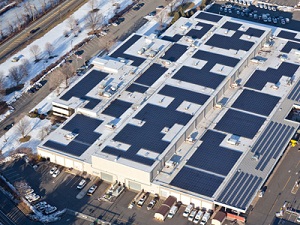CleanTech NJ attendees discuss future of SRECs in New Jersey
 Despite Solyndra’s bankruptcy and Solar World’s angst over Chinese trade practices, 190 attendees at last week’s CleanTech NJ event were focused on fulfilling New Jersey’s solar objectives in the state’s 2011 Energy Management Plan.
Despite Solyndra’s bankruptcy and Solar World’s angst over Chinese trade practices, 190 attendees at last week’s CleanTech NJ event were focused on fulfilling New Jersey’s solar objectives in the state’s 2011 Energy Management Plan.
An optimistic and battle-tested panelist discussed New Jersey’s solar market potential for companies seeking to remain competitive as the federal 1603 program comes to an end and the state’s SREC prices decline to $205.00 in 2012.
Jamie Hahn, Co-Founder and Managing Director of Solis Partners, located in Manasquan, N.J., didn’t doubt U.S. viability in this market space.
“We’re seeing market mechanisms take hold,” he said. “The supply and demand dynamic of the market is doing what it’s intended to do.”
According to Hahn, SREC prices of $650.00 are no longer needed to finance projects, since panel prices have come down 30 percent – 40 percent in the last 16 months.
That’s not to say solar incentives aren’t needed.
He would like New Jersey’s Governor Christi to consider revising SREC purchasing requirements through proposed legislation S2371. This action would provide a softer landing for solar installers and send a market signal to investor-financiers that would otherwise sit on the sidelines.
S2371 was passed in the State Senate on June 29, 2011, and remains in the hands of the Assembly Telecommunications and Utilities Committee. The bill would address the “problem” of solar being built-out too fast in the state.
Instead of energy providers purchasing 596,000 SRECs in 2013, S2371 would require the purchase of 772,000 SRECs—the amount allotted in 2014. The rest of the schedule would remain untouched out to 2026.
With SREC prices at $230.00 and Incentive Tax Credits shifting to 60 percent, Hahn is confident that the N.J. solar industry can thrive.
“What we are going to see with the evolution of any new industry is a consolidation in the market,” he said.
Companies that can withstand the shakeout have many projects ahead.
“We are the Saudi Arabia of commercial roof tops,” Hahn said. “The net-meter, behind the meter projects, offers the biggest societal benefits. They provide business with the opportunities to lower operating costs.”
Governor Christi makes it a priority to woo and retain businesses. Operating costs are a deterrent, and they’re an impediment to job growth.
While the number of N.J. green jobs created is blurry, New Jersey solar installers and their supply chains remain focused on fulfilling the state’s Energy Management Plan objectives.
Pictured: Solis Partners’ 921-kilowatt installation at PSE&G’s headquarters in Franklin Township, N.J.



